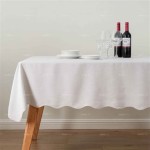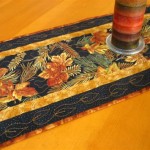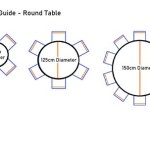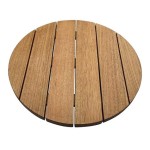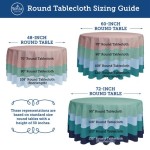Ideal Depth And Table For Round Diamond Sizes
The allure of a round brilliant diamond lies in its unparalleled ability to capture and reflect light, creating the dazzling sparkle that makes it a timeless symbol of love and commitment. However, achieving this brilliance is not solely dependent on carat weight. The proportions of a diamond, specifically its depth and table percentages, play a crucial role in determining the stone's overall beauty and value. Understanding the ideal depth and table for round diamond sizes is essential for making an informed purchasing decision.
Depth refers to the height of the diamond from the table (the flat top facet) to the culet (the pointed bottom facet). It is expressed as a percentage of the diamond's girdle diameter. The table percentage, on the other hand, represents the size of the table facet relative to the diamond's diameter. These two proportions work in tandem to influence how light enters the diamond, bounces internally, and returns to the viewer's eye as brilliance, fire, and scintillation.
When light enters a diamond with ideal proportions, it undergoes total internal reflection, bouncing off the pavilion facets (the lower part of the diamond) and exiting through the table facet. This process maximizes brilliance, the white light reflected back to the eye. If the depth is too shallow or too deep, light will escape through the bottom or sides of the diamond, resulting in a dull and lifeless appearance. Similarly, if the table is too large or too small, it can disrupt the light path and reduce the diamond's overall sparkle.
While there are generally accepted "ideal" ranges for depth and table, it's important to recognize that these are guidelines, not rigid rules. The optimal proportions can vary slightly depending on the diamond's size and other factors, such as its cut grade and individual craftsmanship.
The Importance of Depth Percentage
The depth percentage is a critical factor in determining a diamond's brilliance. A diamond that is too deep will allow light to enter and then escape from the pavilion facets, resulting in a dark center and diminished sparkle. This is often referred to as a "nailhead" effect. Conversely, a diamond that is too shallow will allow light to leak out of the bottom, creating a "fisheye" effect, where a reflection of the girdle is visible through the table.
The Gemological Institute of America (GIA) provides grading reports that assess a diamond's cut quality, and depth percentage is a key component of this evaluation. While a GIA Excellent cut grade indicates that a diamond meets certain proportion criteria, it's still beneficial to understand the optimal depth range for different diamond sizes. A generally accepted ideal depth percentage for round brilliant diamonds falls between 58% and 62%. However, this range can be slightly wider (57% to 63%) for larger diamonds, as they can sometimes handle slightly deeper proportions without a significant loss of brilliance.
For smaller diamonds (under 0.5 carats), a tighter depth range of 59% to 61% may be more desirable to maximize light performance. These smaller stones are more susceptible to appearing dark if the depth is too deep. In contrast, larger diamonds (over 1 carat) might benefit from a slightly deeper depth (up to 62.5%) if the other proportions, such as table and crown angle, are well-balanced. These nuanced adjustments can optimize light return and enhance the diamond's overall beauty.
It is therefore important to consider the size of the diamond when assessing the depth percentage. A range that is ideal for a 0.5 carat diamond may not be ideal for a 2 carat diamond. Consulting with a reputable jeweler who can assess the diamond's individual characteristics is always recommended.
The Impact of Table Percentage
The table percentage also plays a significant role in determining a diamond's brilliance and fire (the dispersion of white light into spectral colors). A table that is too large can allow light to enter and exit the diamond too quickly, resulting in a loss of brilliance and fire. A table that is too small can restrict the amount of light entering the diamond, leading to a dark and lifeless appearance.
The ideal table percentage for round brilliant diamonds typically falls between 54% and 57%. This range generally provides a balance between brilliance and fire, allowing for optimal light performance. However, similar to depth percentage, the optimal table range can vary slightly depending on the diamond's size and other proportions.
For smaller diamonds, a slightly smaller table percentage (53% to 56%) may be preferable, as it can help to maximize brilliance. Smaller diamonds have less surface area for light to enter, so a smaller table can concentrate the light and create a brighter appearance. For larger diamonds, a slightly larger table percentage (55% to 58%) might be acceptable, provided that the other proportions are well-balanced. A larger table can allow more light to enter the diamond, enhancing its overall size perception.
When assessing table percentage, it's crucial to consider the diamond's crown angle and pavilion depth. The crown angle is the angle between the girdle and the crown facets (the upper part of the diamond), while the pavilion depth is the depth of the pavilion facets. These proportions work together with the table percentage to influence light performance. For example, a diamond with a larger table percentage might still exhibit excellent brilliance if it has a steeper crown angle and a shallower pavilion depth.
The relationship between the table percentage and the crown angle is particularly important. A diamond with a high table percentage should have a lower crown angle to compensate, and vice versa. These proportions are often assessed together to determine the overall cut quality of the diamond.
Beyond Depth and Table: The Importance of Cut Grade
While depth and table percentages are important considerations, they are not the sole determinants of a diamond's brilliance. The overall cut grade, as assessed by GIA, takes into account other factors, such as polish, symmetry, and girdle thickness. A diamond with excellent depth and table percentages but poor polish or symmetry may still exhibit subpar light performance.
Polish refers to the smoothness of the diamond's facets. A well-polished diamond will have facets that are free of blemishes and scratches, allowing light to reflect cleanly. Symmetry refers to the precision of the diamond's shape and facet arrangement. A symmetrical diamond will have facets that are evenly spaced and aligned, maximizing light return. Girdle thickness refers to the thickness of the diamond's edge. A girdle that is too thin can be susceptible to chipping, while a girdle that is too thick can add unnecessary weight and detract from the diamond's brilliance.
GIA assigns cut grades ranging from Excellent to Poor. An Excellent cut grade indicates that the diamond meets rigorous standards for polish, symmetry, and proportions, resulting in optimal light performance. A Very Good cut grade indicates that the diamond has minor imperfections that do not significantly affect its brilliance. A Good cut grade indicates that the diamond has more noticeable imperfections that can detract from its sparkle. A Fair or Poor cut grade indicates that the diamond has significant flaws that severely impact its light performance.
When selecting a round brilliant diamond, it is advisable to prioritize cut grade. A diamond with an Excellent or Very Good cut grade is more likely to exhibit exceptional brilliance and fire, regardless of slight variations in depth and table percentages. Consulting with a knowledgeable jeweler who can assess the diamond's overall cut quality and light performance is essential for making an informed decision. They can use specialized tools and techniques to evaluate the diamond's brilliance, fire, and scintillation, helping you to choose the perfect stone.
In summary, while ideal depth and table percentages provide a valuable framework for understanding diamond proportions, they should not be considered in isolation. The overall cut grade, along with other factors such as polish, symmetry, and girdle thickness, all contribute to a diamond's brilliance and beauty. By understanding these factors and working with a trusted jeweler, you can ensure that you choose a round brilliant diamond that will sparkle for a lifetime.

What Are The Ideal Proportions For Round Cut Diamonds Revealed

Ideal Diamond Depth Table Sgdx Singapore Exchange

What Are The Perfect Diamond Proportions

How To Pick A Round Diamond

Diamond Depth Percentages In Round Brilliant Cut Diamonds Findmyrock

Diamond Anatomy Of A Round Draco Diamonds

Diamond Anatomy Explained

What Are The Ideal Proportions For Round Cut Diamonds Revealed

Guide Ideal Depth Table For Round Cut Diamonds

Diamond Measurements And Proportions Grand Jewelers
Related Posts

